Quick Summary
Yes, upgrading your facelifted Mercedes S-Class headlights is often considered an essential enhancement. It boosts visibility, modernizes the car’s look, and can improve safety. This guide breaks down why and how to approach this popular upgrade for discerning S-Class owners.
For many Mercedes-Benz S-Class owners, the headlights are more than just lamps; they are a signature element of the car’s prestigious presence. When Mercedes-Benz introduces a facelift, the updated headlights often represent a significant leap in technology and aesthetics. Thinking about upgrading your S-Class headlights? You’re not alone! Many owners find these illuminated jewels are a key area for enhancement. This guide will walk you through why upgrading facelifted S-Class headlights is a smart move, what options are available, and what you should consider to ensure a seamless and beneficial transformation for your luxury sedan. We’ll cover everything from understanding the technology to common modifications, making this process clear and achievable.
Why Facelifted Mercedes S-Class Headlights Are an ‘Essential’ Upgrade
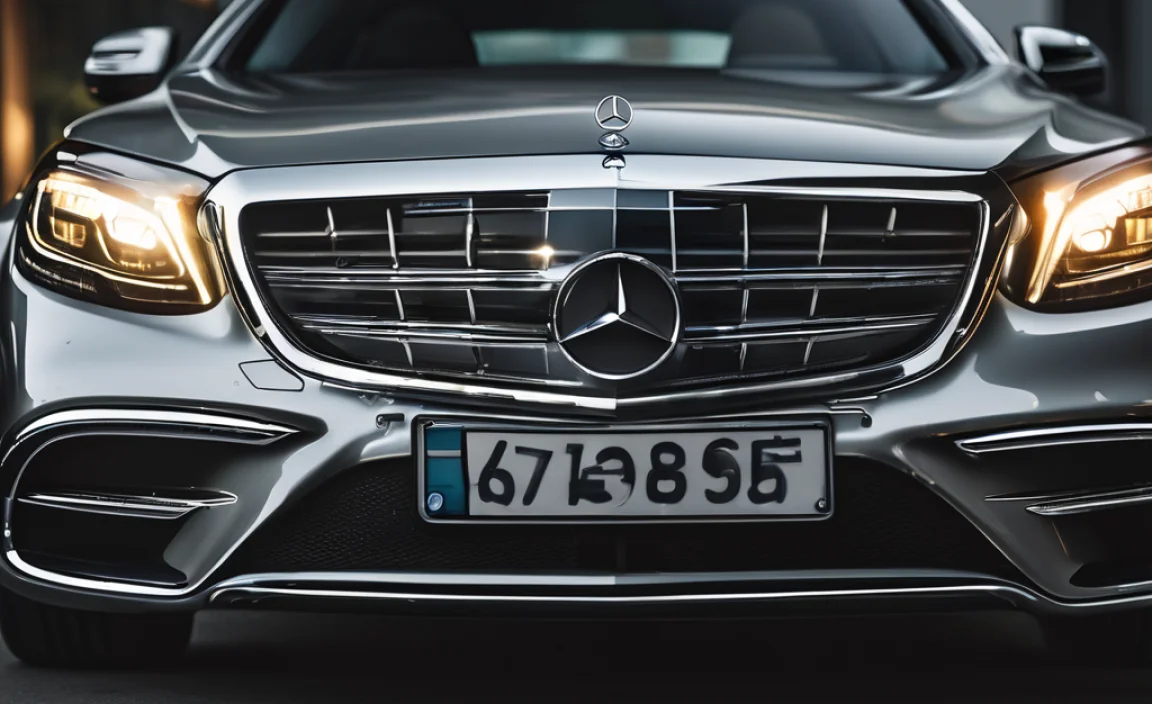
The term “essential” might sound strong, but for many S-Class aficionados, upgrading the headlights on a facelifted model hits a sweet spot between necessity and desirability. It’s about more than just aesthetics; it’s about performance, safety, and maintaining that cutting-edge feel that the S-Class embodies. Let’s dive into why this upgrade is so popular.
Enhanced Visibility and Safety
One of the primary drivers for headlight upgrades is improved illumination. Modern headlight technology, especially LED and advanced LED variants, produces brighter, crisper light with a significantly wider beam pattern than older halogen systems. This enhanced visibility is crucial for:
- Night Driving: Better light penetration reveals potential hazards like road debris, pedestrians, or animals earlier, giving you more time to react.
- Adverse Weather: The quality of light from modern systems can cut through fog, rain, and snow more effectively, improving your ability to see and be seen.
- Reduced Driver Fatigue: A well-lit road reduces eye strain for the driver, making longer journeys more comfortable and safer.
Mercedes-Benz is a leader in automotive lighting innovation. Facelifted S-Class models often feature advanced systems like MULTIBEAM LED, which uses a matrix of individually controllable LEDs to cast light precisely where it’s needed, actively avoiding dazzling other road users while fully illuminating the road ahead. Upgrading to or enhancing these systems directly benefits your safety.
Modern Aesthetics and Resale Value
The headlights are a focal point of any vehicle’s design. On a facelifted S-Class, the updated lighting signatures are often a key differentiator from older models. Upgrading can:
- Modernize the Look: Newer headlight designs can make an older facelift model appear more current, bringing it closer to the latest design language.
- Personalize Your S-Class: While factory options are excellent, some owners seek subtle or striking aftermarket enhancements to express their personal style.
- Boost Resale Value: A car that looks well-maintained and updated, especially with desirable features like advanced lighting, often commands a higher price on the used market.
The distinctive “three-stripe” LED DRL (Daytime Running Light) signature, for example, has become iconic. Ensuring your S-Class features the latest or most desirable iteration of these lighting elements can significantly elevate its perceived value and aesthetic appeal.
Technological Advancements
Beyond simple brightness, modern headlights offer sophisticated features that enhance both usability and safety. These can include:
- Adaptive Driving Beam: Systems that automatically adjust the headlights’ pattern to suit driving conditions, steering, and oncoming traffic.
- Cornering Lights: Lights that illuminate the direction of a turn, improving visibility around bends.
- Signpost Recognition: Integrated systems that can detect and highlight road signs.
If your current S-Class lacks these advanced features, an upgrade might seem like a significant undertaking. However, with the right parts and knowledge, integrating these technologies can elevate your driving experience considerably.
Understanding Facelifted S-Class Headlight Technology
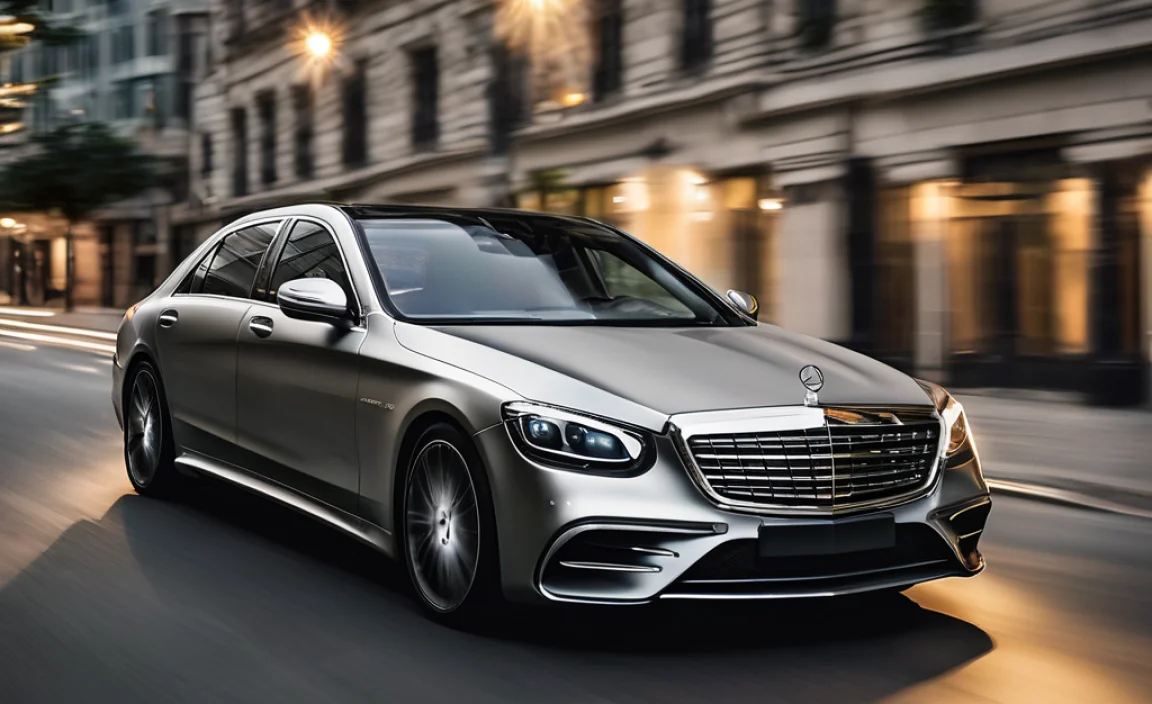
Mercedes-Benz doesn’t just put lights on a car; they engineer complete lighting systems. When we talk about facelifted S-Class headlights, we’re typically referring to models that have received mid-cycle updates, often bringing new front-end styling and, crucially, updated lighting technology. For the W222 generation S-Class, for instance, the facelift introduced significant changes. Let’s break down the common technologies you’ll encounter.
Halogen vs. LED vs. MULTIBEAM LED
The evolution of automotive lighting is most evident when comparing older halogen bulbs to modern LED units. For the S-Class, especially face-lifted models, LED is the standard, but the sophistication varies.
Halogen (Older Models / Base Trims:
While less common on face-lifted S-Class, early or very basic variants might still utilize aspects of halogen technology or are upgradable from it.
- How it works: A filament inside a halogen-filled glass bulb glows when electricity passes through it.
- Pros: Inexpensive to produce and replace.
- Cons: Less energy-efficient, shorter lifespan, warmer color temperature (more yellow light), less bright than LEDs.
LED (Light Emitting Diode)
- How it works: Semiconductor devices that emit light when an electric current passes through them.
- Pros: Much more energy-efficient, significantly longer lifespan, brighter and crisper light, can be manufactured in smaller sizes allowing for more complex designs.
- Cons: Can be more expensive to replace than halogens if a specific module fails.
MULTIBEAM LED (Advanced Facelift Models)
- How it works: A sophisticated system using multiple, individually controllable high-performance LEDs. A control unit interprets camera and sensor data to precisely adjust the light pattern 100 times per second. This allows for intelligent functions like glare-free high beams.
- Pros: Superior illumination, excellent energy efficiency, advanced adaptive features like ACTIVE LIGHT SYSTEM and ULTRA RANGE Highbeam.
- Cons: Highest cost, most complex to repair, requires specific control modules and sensors.
Key Features of Modern S-Class Headlights
Facelifted S-Class models often showcase features that were once considered futuristic. Understanding these will help you identify what you have or what you ideally want:
- Daytime Running Lights (DRLs): Distinctive LED signatures that enhance visibility during the day and give the car its signature look. The number and style of light elements (e.g., “three stripes”) are key design cues.
- Dynamic Turn Signals: Sequential, “sweeping” turn signals that are more intuitive and clearly signal your intention to change lanes.
- Adaptive Highbeams (Adaptive Light System): The system automatically adjusts the high beams to avoid dazzling other drivers. It uses a camera to detect oncoming vehicles and their brake lights, as well as vehicles ahead.
- Cornering Light Function: Illuminates the area around a corner when the steering wheel is turned or the turn signal is activated.
- Ultra Highbeam: Extends the range of the high beams significantly beyond standard limits, illuminating up to 650 meters.
Common Upgrades and Considerations
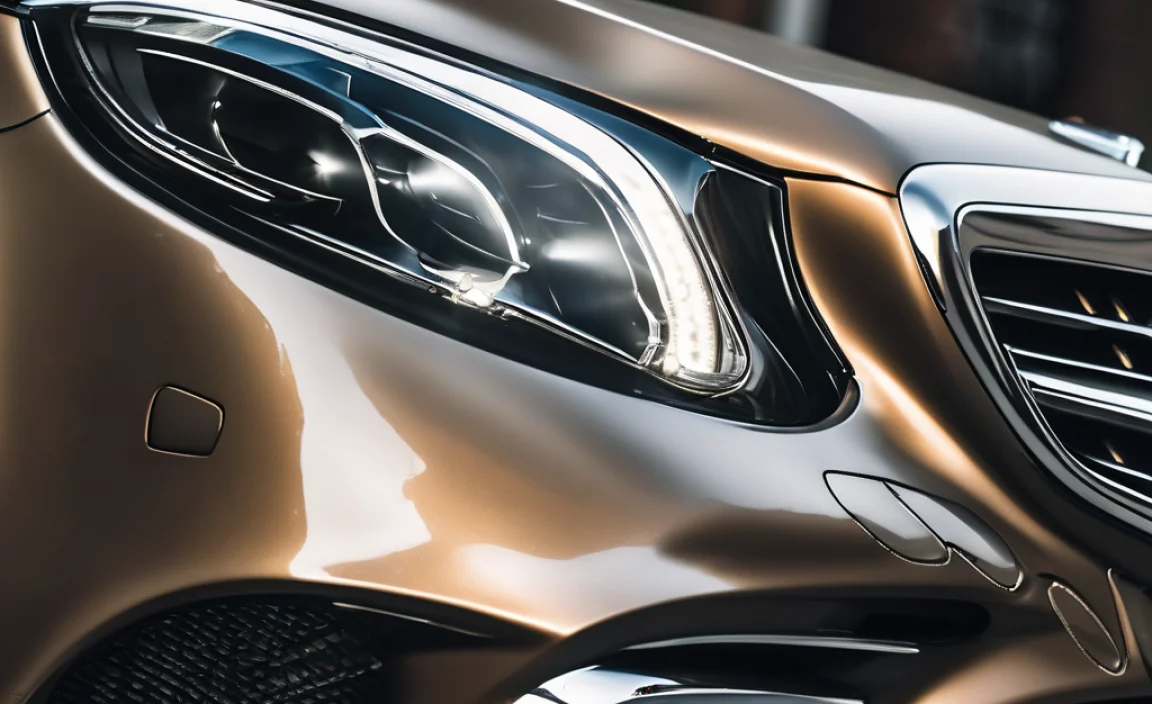
When it comes to upgrading your facelifted S-Class headlights, the possibilities range from simple bulb replacements to full module swaps. It’s crucial to understand your specific model year and existing equipment to make the right choices. Remember, the S-Class is a complex vehicle, and electrical system compatibility is paramount.
Is It a Facelifted Model? Identifying Your S-Class
First, confirm if your S-Class has indeed undergone a facelift. Facelifts typically involve updated front and rear bumpers, grille, and lighting components, as well as interior tech updates. For example, the W222 S-Class had a significant facelift around the 2017-2018 model year, introducing revised headlights and taillights with updated LED signatures.
Genuine Mercedes-Benz Upgrades
The most straightforward, albeit often the most expensive, route is to upgrade using genuine Mercedes-Benz parts. These are designed to be direct replacements and ensure full compatibility with your car’s existing wiring and control modules.
- Pros: Guaranteed fit, OEM quality, full integration with vehicle systems, maintains warranty.
- Cons: Very high cost, limited options for customization beyond factory specifications.
Where to Find Genuine Parts: Your local Mercedes-Benz dealership is the primary source. For online options, reputable Mercedes-Benz parts specialists can often provide these at a slightly lower cost.
Aftermarket Lighting Solutions
The aftermarket offers a wide array of options, from individual LED bulbs for specific functions to complete headlight assemblies designed to mimic or enhance the factory look. However, for high-end vehicles like the S-Class, caution is advised.
- Pros: Can be more affordable than OEM, offers greater design variety, potential for unique features.
- Cons: Quality can vary wildly, compatibility issues are common, may void parts of your vehicle’s warranty, potential for electrical gremlins or failure.
For facelifted S-Class models, it’s rare to find complete aftermarket headlight assemblies that offer a true plug-and-play upgrade to advanced features like MULTIBEAM LED if your car didn’t come with it. More common aftermarket upgrades involve replacing individual bulbs (e.g., for fog lights, turn signals) with brighter LEDs or changing the color temperature of existing LED DRLs, but these should be approached with extreme care to avoid errors or damage.
The “Facelifted Mercedes S-Class Headlights and Taillights” Package
Sometimes, enthusiasts look for complete lighting transformations. If you own a pre-facelift S-Class and want the look of a facelifted model, or if you have a facelift model and want to swap out elements for an even newer look (e.g., from W222 to a visually similar W223 style, though this is a major and complex conversion), you might hear about comprehensive “headlights and taillights” upgrade packages. These are often:
- Full Facelift Conversions: Involving replacing entire front and rear bumper assemblies, grilles, and both headlight and taillight units. These are extremely complex, costly, and labour-intensive.
- Component Swaps: Swapping specific facelifted components (like taillights on a facelift that received a different update later, or different headlight designs within the same facelift generation if available).
These types of upgrades are generally for experienced DIYers or professionals due to the complexity of wiring, module coding, and physical fitment. For most owners seeking improvement, focusing on enhancing the existing facelifted lights is more practical.
DIY vs. Professional Installation
The complexity of S-Class lighting systems means installation is a critical step.
- DIY: Possible for simple tasks like replacing an accessible bulb or fuse. However, changing entire headlight modules or integrating new technologies often requires specialized tools, diagnostic software (like STAR/XENTRY), and significant technical knowledge. Incorrect installations can lead to error codes, non-functional lights, or even damage to sensitive electronic control units.
- Professional Installation: Highly recommended for anything beyond basic bulb swaps. A qualified Mercedes-Benz specialist or dealership can ensure the upgrade is done correctly, coded properly into the vehicle’s systems, and guarantees functionality and safety.
Key Questions to Ask When Considering an Upgrade
- What specific model year is my S-Class?
- What lighting technology does my car currently have (Halogen, standard LED, MULTIBEAM LED)?
- Are the desired upgrade parts genuine Mercedes-Benz or reputable aftermarket?
- Will the new lights require any component coding or software adjustments using diagnostic tools?
- Are there any compatibility issues with my car’s existing control modules?
- What is the warranty on the new parts and the installation?
Step-by-Step Guide: Enhancing Your Upgrade (Conceptual)
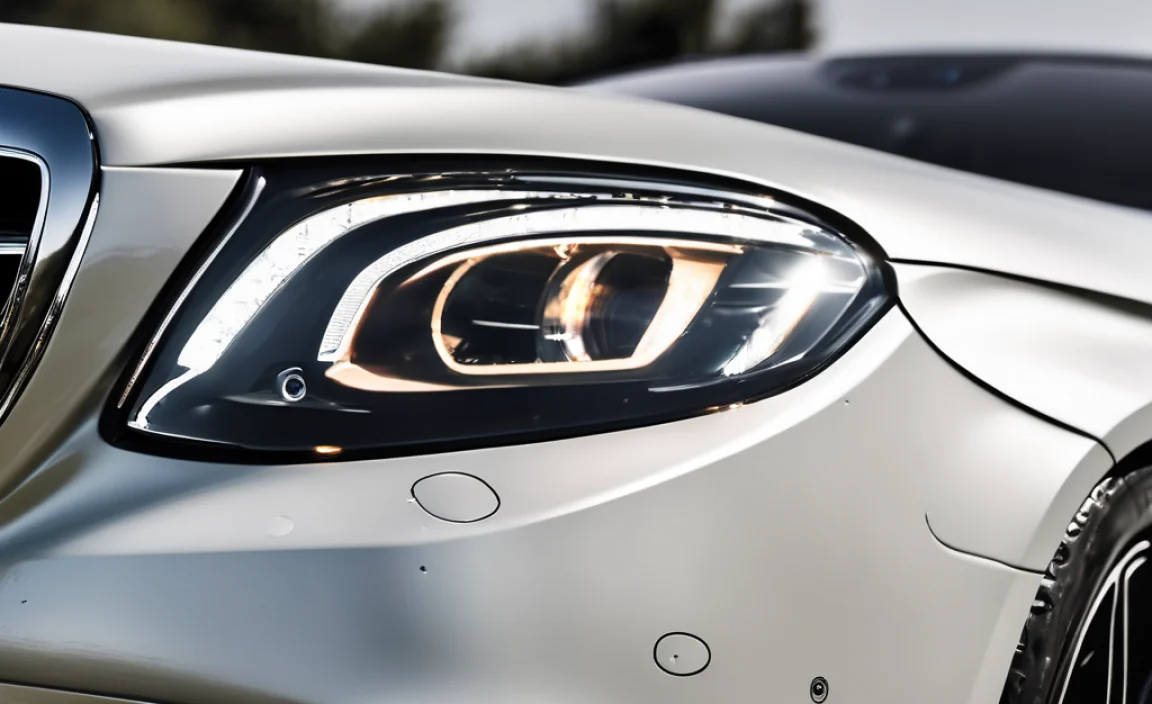
Since full headlight replacements on an S-Class are highly technical and often best left to professionals, this guide focuses on the process of deciding and performing a conceptual upgrade, highlighting key considerations. For actual physical replacement, always refer to a certified technician or detailed workshop manuals specific to your model and the parts being installed.
Step 1: Diagnosis and Goal Setting
Before touching anything, understand the “why.”
- Assess Current Performance: Are your headlights dim? Is the beam pattern poor? Are there any error messages? Identifying the problem is the first step.
- Define Your Objective: Do you want brighter light, a different aesthetic (e.g., a more modern DRL signature), or advanced features like adaptive high beams?
- Consult Your Owner’s Manual: Familiarize yourself with your vehicle’s existing lighting system and any basic maintenance procedures. You can often find information on bulb types and fuse locations here.
- Research Your Specific Model: For a facelifted W222 S-Class, for example, research which trim levels or model years came with MULTIBEAM LED. This will define what is technically possible without extreme modification.
Step 2: Researching Upgrade Options
This is where you identify potential solutions.
- Identify Part Numbers: If aiming for genuine upgrades, find the exact Mercedes-Benz part numbers for the headlights or components you desire. Online Mercedes-Benz parts catalogs or a dealership can help. For example, if you have standard LED but want MULTIBEAM LED, you’ll need the part numbers for the MULTIBEAM units.
- Investigate Aftermarket if Applicable: If considering aftermarket, research brands known for quality in Mercedes lighting. Look for products that explicitly state compatibility with your S-Class facelift model and year. Be extremely wary of suspiciously cheap offerings for complex components.
- Check Feature Compatibility: Ensure the upgrade you select is compatible with your car’s existing electrical systems and control modules. For example, an upgrade requiring MULTIBEAM LED functions might need a specific Front Camera System (Code 235) and potentially an updated ECU (Electronic Control Unit).
Step 3: Gathering Tools and Parts
This is crucial for a smooth installation, whether DIY or guiding a professional.
Potential Tools (for advanced DIY projects, often requiring professional use):
- Torx and Hex Socket Set
- Ratchet and Extension Bar Set
- Plastic Trim Removal Tools (to avoid scratching paint and trim)
- Panel Clip Pliers
- Torque Wrench
- Dielectric Grease (for electrical connections)
- OBD-II Scanner with Mercedes-Benz Specific Software (e.g., XENTRY/DAS, ISTA, or Autel/Launch with advanced Mercedes functions) for coding and diagnostics.
- Wiring Harness Adapters (if non-plug-and-play)
- Safety Glasses
- Gloves
Parts:
- Facelifted S-Class Headlight Units (Right and Left)
- Necessary mounting hardware or clips
- Wiring adapters or modules if required
- Potentially, new fuses or relays
External Resource: For understanding the types of tools used in automotive repair, especially for German cars, resources like Auto Bild’s guide to workshop tools (in German, but visually informative) can be helpful in identifying professional-grade equipment.
Step 4: Installation (Conceptual Overview)
This is a high-level overview. Always follow model-specific repair manuals.
- Safety First: Ensure the vehicle is parked on a level surface, the engine is off, and the battery is disconnected (or you understand how to safely work around live circuits, which is often necessary for diagnostics/coding but requires extreme caution).
- Access the Headlights: This usually involves removing the front bumper cover, which is secured by numerous screws and clips.
- Disconnect Electrical Connectors: Carefully unlatch and disconnect all electrical plugs from the existing headlight units.
- Remove Old Headlights: Unscrew the mounting bolts holding the headlight assembly in place and carefully slide the old unit out.
- Install New Headlights: Fit the new headlight assemblies, ensuring they are seated correctly. Reinstall mounting bolts, tightening them to the manufacturer’s specifications.
- Reconnect Electrical Connectors: Plug in the electrical connectors for the new lights. Verify they click securely into place.
- Reassemble: Reinstall the front bumper cover and all associated components.
Step 5: Coding and Testing
This is arguably the most critical step for modern Mercedes-Benz vehicles.
- Connect Diagnostic Tool: Hook up your OBD-II scanner with the appropriate Mercedes-Benz software.
- Read Fault Codes: Before attempting to code, check for any existing fault codes.
- Code New Modules: Many headlight replacements, especially for advanced systems like MULTIBEAM LED, require the vehicle’s control modules to be informed of the new hardware. This is done via “coding” or “parameterization” using diagnostic software. Without this step, lights may not function correctly or may throw error messages (e.g., “Lamp malfunction”).
- Perform System Test: Test all functions of the new headlights: low beam, high beam, DRLs, turn signals (including dynamic function if applicable), and any adaptive features. Cycle the ignition and check for any warning lamps on the dashboard.
- Alignment: After installation, the headlights must be properly aimed using a headlight aiming tool to ensure correct road illumination and compliance with legal requirements. This is typically done at a workshop.
Table: Headlight Upgrade Scenarios
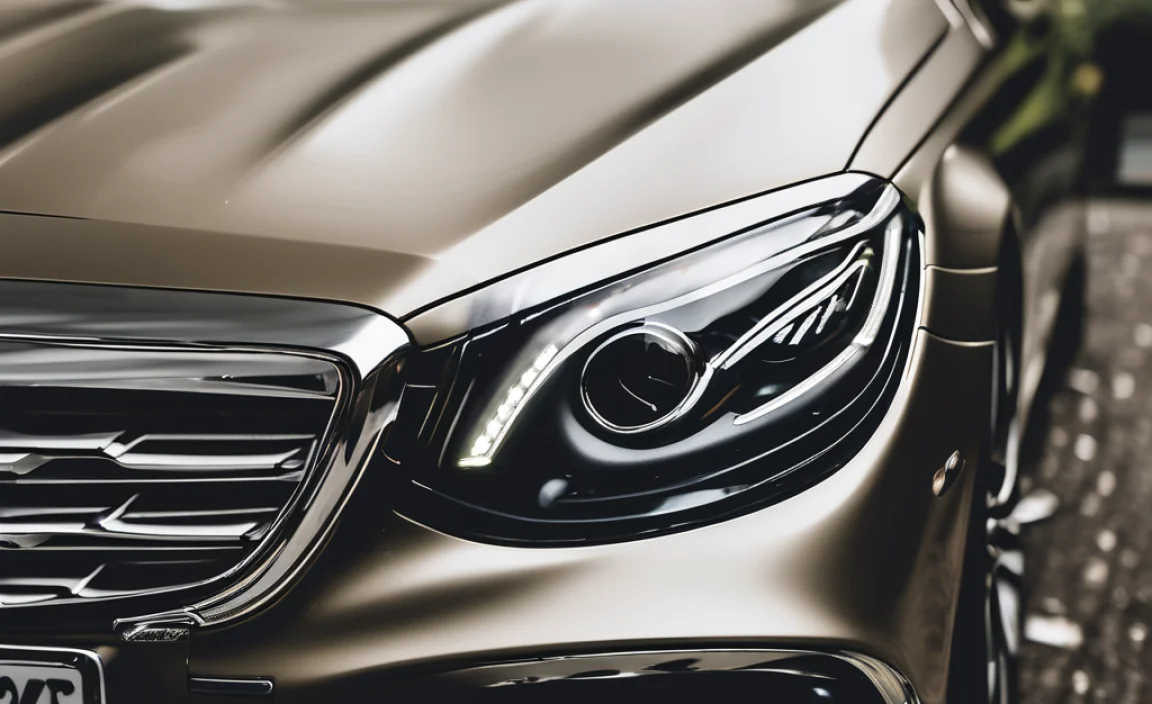
Let’s visualize common upgrade paths and their typical complexity.
| Current Headlight Type | Desired Headlight Type (Facelift Generation) | Complexity Level | Typical Components Involved | Likely Need for Coding | DIY Feasibility |
|---|---|---|---|---|---|
| Standard Halogen (Rare on facelift) | Standard LED | High | Full LED headlight assemblies, wiring harness adapters/modules, ballast/control units. | Yes, often significant. | Very Low to Low |
| Standard LED | MULTIBEAM LED | Very High | Full MULTIBEAM LED headlight assemblies, potentially updated control modules, advanced wiring. | Yes, crucial and complex. | Extremely Low |
| Standard LED | Facelift-Specific LED (e.g., updated DRL design within same gen) | Medium to High | Facelift LED headlight assemblies, potentially minor adapters or module updates. | Yes, usually required. | Low |
| MULTIBEAM LED | Updated MULTIBEAM LED (if a later facelift occurred) | Medium | Newer generation MULTIBEAM units, wiring possibly compatible or needing minor adapters. | Yes, for new features or component recognition. | Low to Medium |
| Any | Replacement Bulb (e.g., brighter LED for DRL or low beam within existing housing) | Low to Medium | Specific LED bulbs (ensure CANbus compatibility to avoid errors), potentially specialized tool for access. | Rarely, but may need to clear errors if non-compatible bulbs are used. | Medium |
Note: This table is a generalization. Specific component requirements and coding needs can vary significantly based on the exact vehicle model year, chassis code (e.g., W222, W223), and original factory options.
Frequently Asked Questions (FAQ)
Q1: How can I tell if my Mercedes S-Class headlights need upgrading?
A1: You might consider an upgrade if your current headlights provide insufficient illumination at night, if the beam pattern is uneven or limited, if you experience frequent bulb failures (if not LED), or if you desire a more modern aesthetic matching newer S-Class models. Error messages on your dashboard related to lighting are also a clear indicator of a problem that might warrant an upgrade or repair.
Q2: Are facelifted Mercedes S-Class headlights plug-and-play?
A2: While some minor bulb replacements might be, actual headlight module upgrades or conversions, especially between different technologies (like Halogen to LED, or standard LED to MULTIBEAM LED) on facelifted models, are rarely plug-and-play. They often require complex wiring modifications and, crucially, electronic control unit (ECU) coding using specialized diagnostic tools to ensure proper function and avoid error messages.
Q3: What is MULTIBEAM LED, and is it a worthwhile upgrade?
A3: MULTIBEAM LED is Mercedes-Benz’s advanced adaptive headlight system. It uses a matrix of LEDs that can individually control light output to precisely illuminate the road, actively avoid dazzling other drivers with glare-free high beams, and enhance visibility in various conditions. It is a significant upgrade in terms of safety, driving comfort, and technology, making it highly desirable for many owners.
Q4: Can I upgrade my S-Class taillights at the same time as the headlights?
A4: Yes, many owners choose to upgrade both headlights and taillights for a comprehensive exterior refresh, especially when transitioning to a facelifted look or enhancing the factory facelift design. Similar to headlights, taillight upgrades can also involve wiring and coding, particularly if changing the type of lighting technology or design.
Q5: What are the risks of using cheap aftermarket headlights?
A5: Cheap aftermarket headlights often suffer from poor build quality, leading to rapid failure, inaccurate beam patterns (which can be unsafe and illegal), and ingress of moisture. More critically for a sophisticated car like the S-Class, they can cause electrical system errors, interfere with other vehicle functions, and potentially damage sensitive control modules, leading to expensive repairs beyond the cost of the lights themselves.
Q6: How much does a facelifted S-Class headlight upgrade typically cost?
A6: Costs vary dramatically. Genuine Mercedes-Benz MULTIBEAM LED headlight units alone can cost several thousand dollars per side. Professional installation and coding can add another significant amount. Lesser aftermarket options or simpler LED bulb upgrades will be considerably less expensive, ranging from a few hundred dollars for bulbs installed DIY to a couple of thousand for professionally installed aftermarket modules. It’s essential to get detailed quotes from reputable sources.
Q7: Where can I get my S-Class headlights coded after installation?
A7: ECU coding for Mercedes-Benz vehicles requires specialized diagnostic tools and expertise. Your best options are:
- An authorized Mercedes-Benz dealership.
- A reputable independent Mercedes-Benz specialist workshop.
- Specialized automotive electronics shops that offer coding services for premium vehicles.
Ensure they have the correct diagnostic equipment (e.g., XENTRY system) and experienced technicians.
Conclusion
Upgrading the headlights on a facelifted Mercedes-Benz S-Class offers a powerful combination of enhanced safety, improved driving dynamics, and modernized aesthetics. While the allure of cutting-edge lighting technology like MULTIBEAM LED is strong, it’s crucial to approach such upgrades with a clear understanding of your vehicle’s existing system and the complexities involved. For most S-Class owners, prioritizing genuine parts installed by certified professionals is the surest way to achieve a seamless, reliable, and beneficial enhancement. By carefully researching your options, understanding the technical requirements, and entrusting the installation and coding to experts, you can ensure that your S-Class not only looks spectacular but also performs at its very best, day and night.